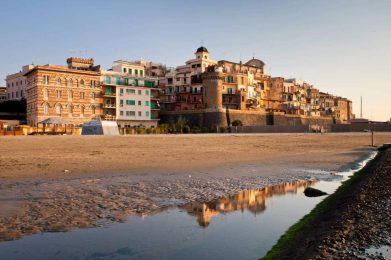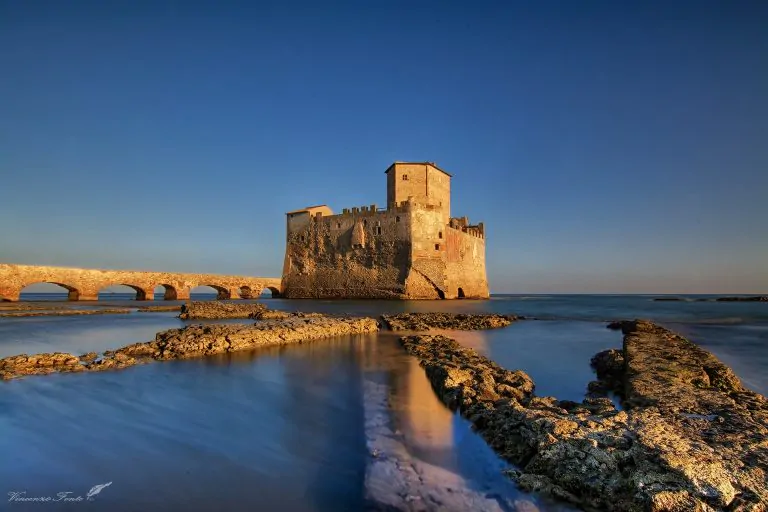Ph. vincenzo_photo_fonte/flickr
Located in the picturesque territory of Neptune, Torre Astura encompasses centuries of history, culture and nobility. This fascinating place is located in Lazio along the Via Severiana, a natural landing place at the mouth of the Astura River. The site has been home to important villas since the first century B.C., including Cicero’s, and was a historical icon witnessing the last stages of Cicero’s escape from Mark Antony.
In the era between the end of the Roman Republic and the beginning of the Roman Empire, this privileged site saw the construction of a villa, partially on the mainland and partially on an artificial island. A distinctive feature was a vast fishpond, traces of which are still visible today, later transformed into a fortress. From the Roman period, Astura became an extension and boundary of Antium, to the east, and a favorite place of Roman nobles because of its natural amenity.
Around 1140, Astura was acquired by Ptolemy of the Counts of Tusculum, later being ceded to the Frangipanes in 1193. To protect themselves from the hostility of the Saracens, they built a maritime fortress with a pentagonal tower, surrounded by water and connected to the mainland by a striking brick bridge. Later, the last representative of the Hohenstaufen family, Conradin of Swabia, took refuge here after his defeat at the Battle of Tagliacozzo.
In 1426, the fortress passed into the hands of the Caetani, the Orsini and finally the Colonna and Aldobrandini families, the latter thanks to Clement VIII Aldobrandini, who sold it in 1594. Later the Aldobrandini family became extinct, then the estate passed to the Borghese family, before being sold to the municipality of Nettuno in the 1570s.
From the heights of Torre Astura, one can admire breathtaking views ranging from Circeo to Anzio. Until recent times, the site was immersed in the marshy forest that occupied the Agro Pontino, immediately behind the coastal dune. Among its illustrious visitors, mention must be made of Ferdinand Gregorovius and Gabriele D’Annunzio, voices of a romantic description of the place in the second half of the 19th century.
In more recent history, the fortress of Torre Astura has become famous as a location for several films and TV dramas, including “Pinocchio,” “L’arcidiavolo,” “Brancaleone alle Crociate” with Vittorio Gassman and many others.


